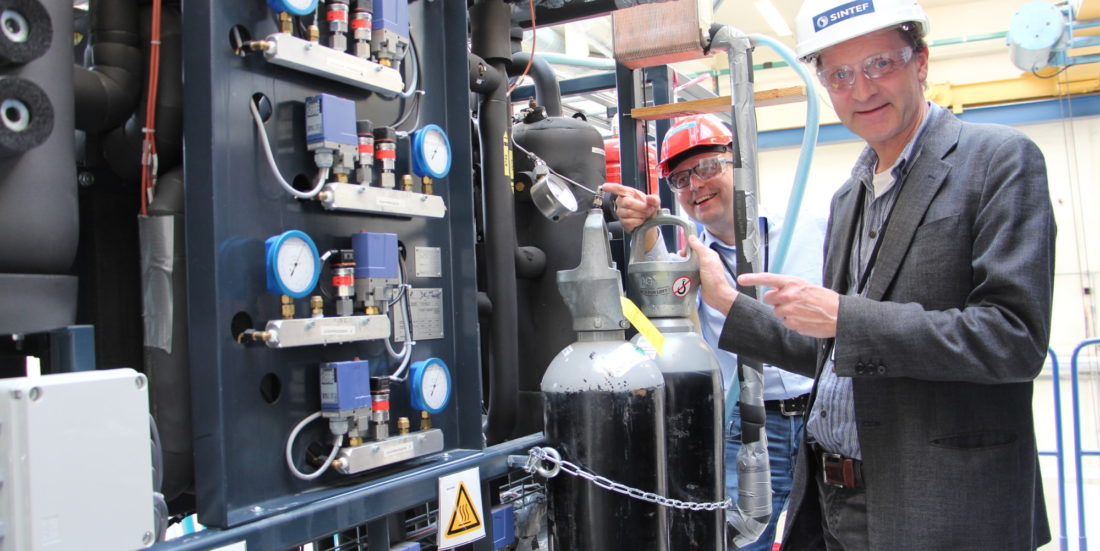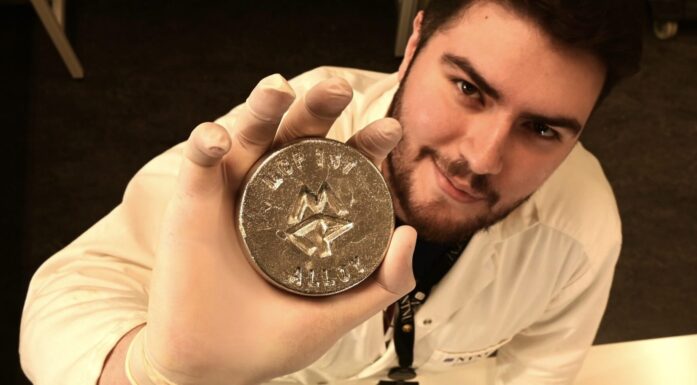Making the most of waste heat
Can heat pumps be used to upgrade waste heat to 200 degrees? “No problem – in theory”, say researchers.
The idea behind this new SINTEF project is to exploit the relatively large volumes of energy that industries dispose of in the form of waste heat because it is at the ‘wrong’ temperature required for their production processes. In other words, the aim is to recycle the energy and put it to good use by upgrading the heat using heat pumps.
FACTS:
- Statoil, Hydro, Tine, Statkraft, Vedde AS and several foodstuff manufacturers, including the chocolate and animal feed manufacturers Mars, are participating in the project. The companies Cadio AS, Hybrid Energi AS and EPCON Evaporation Technology are also taking part.
- The project has a budget of NOK 16 million, distributed over four years. Eighty per cent of this is being funded by the Research Council of Norway, and the remainder by the project participants.
The project has been given the name HeatUp, and has attracted a number of industrial partners including Statoil, Statkraft, Tine, Vedde AS, Hydro and Mars Petcare, to mention just a few.
“It was quite a battle to get to participate in this Research Council of Norway-funded project”, says energy researcher Michael Bantle at SINTEF. He is one of the researchers who will now be looking into what literally could turn out to be a real energy boost for Norwegian industry.
“The reason for the interest probably lies in a common realisation that coal, oil and gas are finite resources that also have a negative impact on global climate”, says Bantle. “This is why we’re trying to find new technologies that can replace, at least in part, the energy derived from fossil fuel combustion. “We simply can’t continue to squander our oil, gas, coal and electricity resources when we have an opportunity to replace them with environmentally-friendly alternatives such as waste heat”, he says.
Currently, oil, gas and electricity are all used for heating in a number of industrial processes. If heat pumps can be used instead, this will provide a long-awaited environmental boost and a greening of the bottom line.
Heat pumps in series
This is contingent on researchers succeeding in ‘upgrading’ the temperature of water containing waste heat to more than 150 ᵒC. Normally the temperature is between 50 and 100 degrees.
“We have a plan in place for how this can be achieved”, says Bantle. “We may also have a go at aiming for 250 degrees, but these are early days. Part of the plan is to connect the heat pumps ‘in series’, enabling the water to be heated stepwise. However, this demands new knowledge and new technology. We are currently working to develop systems based on natural work media such as butane, pentane, propane, ammonia, CO2 or simply water. Our aim is to find out which media is best suited to the different temperature ranges, and which can contribute simultaneously towards the phasing-in of natural cooling media. For example, everyone agrees that water is neither expensive nor a hazardous greenhouse gas”, says Bantle.
Lego for grown-ups
Petter Nekså is an energy researcher and project manager at SINTEF, and is keen to develop not just one, but several systems as part of the HeatUp project.
“Different industrial processes have different heat requirements”, he explains. “For example, Statkraft needs to upgrade waste heat to about 70ᵒC for its district heating plants, while a foodstuffs company will need upgrades to 120ᵒC to produce high-pressure steam, which is a key production factor in a range of drying technologies.
“Our aim is to create a set of basic components that can be assembled as required – just like Lego. In this way upgrades can be adapted as necessary to any given industrial process”, says Nekså.
Looking to the car industry
Part of the plan in the search for the perfect heat pump system is to ‘steal’ some technology from the car industry.
The compressor plays a key role in a heat pump. This is because it is the pressure that raises the temperature of the work media, and which in turn enables the heat pump to elevate the temperature of the water containing the waste heat. (Or, if the process is reversed, to cool it as in a refrigerator).
“Every modern diesel car is installed with a small turbocompressor. If we succeed in adapting this technology to produce, for example, a steam compressor, it will be possible to heat 50 passive homes using a 20 kilogramme unit”, says Michael Bantle.
The engines of modern diesel cars are installed with a turbocompressor, which is used to compress the air before it is supplied to the combustion chamber. This provides the engine with more power and thus greater acceleration capability.
“We want to modify this technology and test it out”, says Bantle. “Not least because this is a tried and tested component, which is also mass-produced. Moreover, we expect that it can be manufactured for a fraction of the cost of today’s compressors”, he says.
This may sound straightforward enough, but a lot of research will have to be done. But the researchers are confident that they will succeed in developing a heat recycling system that is compact, inexpensive and highly efficient.
Success with this type of compressor technology will enable industries to save many millions of kroner per plant in manufacturing costs. It will also enable them to save energy and exploit green technologies – all at the same time.




